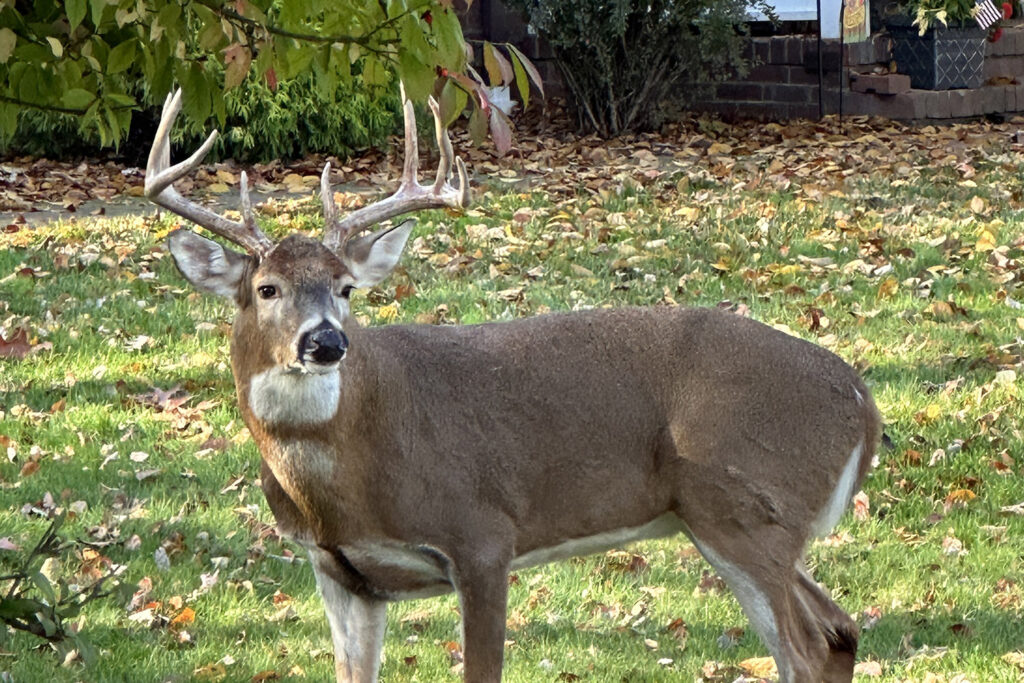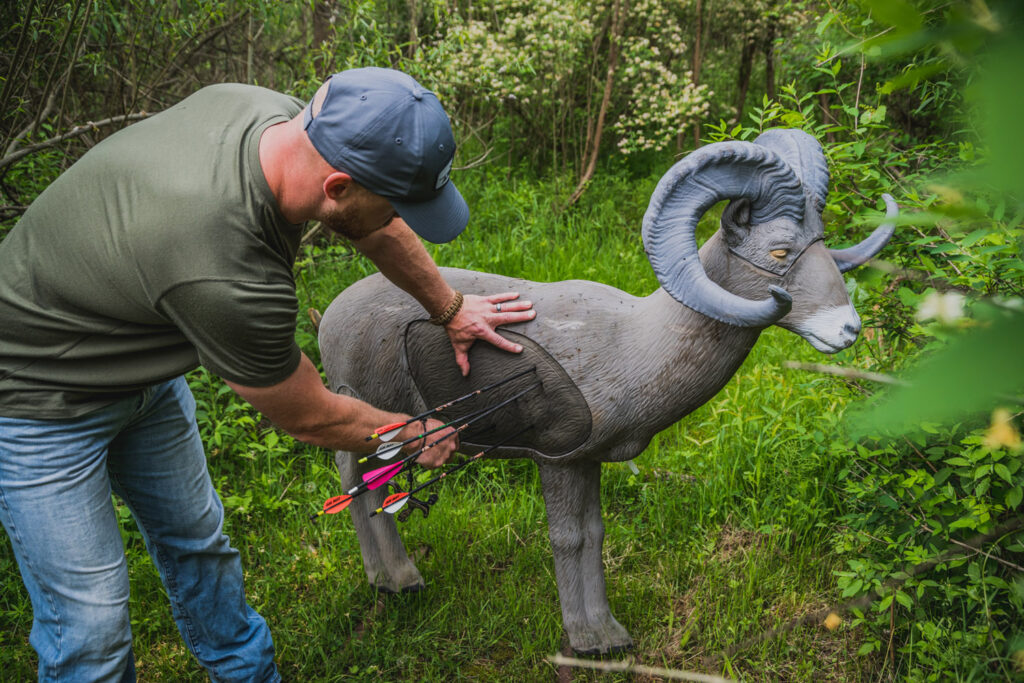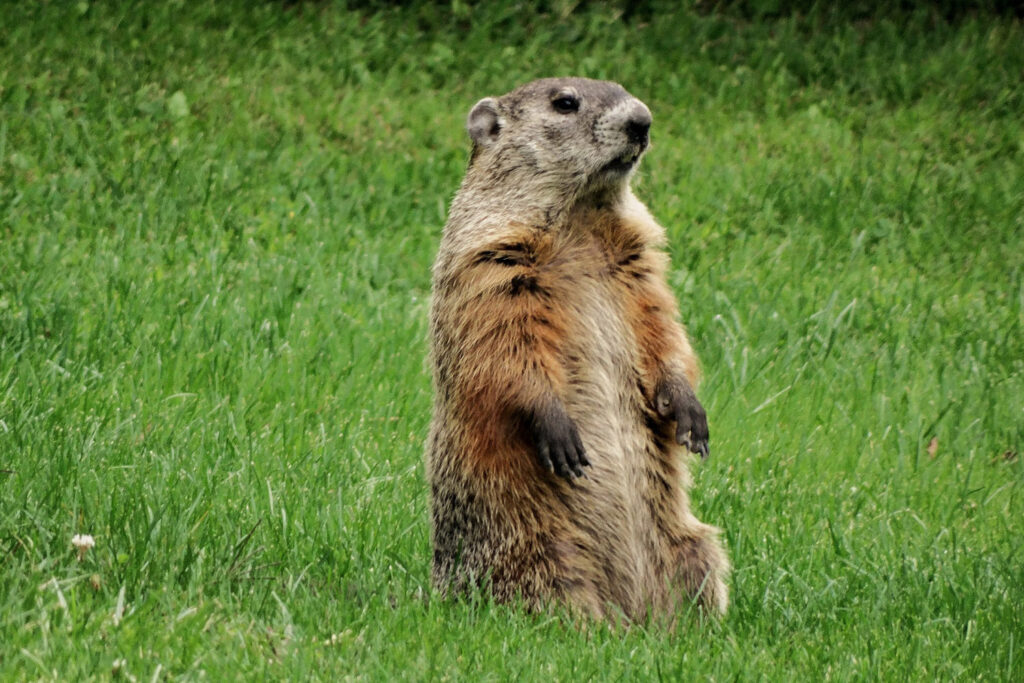Sounds weird, right?
I sometimes field this question from my non-hunting friends: How can hunting deer be good for deer? In fact, there are solid reasons, firmly grounded in science, for why regulated hunting is a critical component of successful wildlife management. The beginning of Michigan’s firearm deer season is as good a time as any to consider why that trip to deer camp is not just a hallowed tradition—it is also a positive good for the environment.
The basic explanation is this: Without natural predators like wolves, mountain lions, or humans wearing blaze orange, Michigan’s deer population would quickly outgrow the ecosystem’s ability to support it.
Overpopulation leads to overgrazing, which can have a cascading effect for other species. Malnutrition and disease spread, populations thin out. As much as PETA might protest, predators (including us) play an important role in maintaining the ecosystem for healthy animal populations.
For us humans, the overpopulation of deer also increases the risk of car accidents and brings deer into urban and suburban areas, causing further issues.
So is hunting deer unambiguously a good thing? Not quite.
Hunting can be a great boon for wildlife management, but overhunting has the complete opposite effect. Unfortunately, Michigan has some history with overhunting.
Two hundred years ago, Michigan’s wildlife populations seemed limitless. Deer, elk, wolves, and beavers were flourishing. Just a few decades later, however, many of Michigan’s game species were on the same track as the buffalo, and for the same reason: westward expansion.
Deer and other game were an important source of meat for the frontier’s rapidly growing cities and logging camps. Hunting for cash—or “market hunting”—was unregulated, and hunters had every incentive to harvest as many animals as they could without concern for the herd. This is when people began using the term “buck” in reference to money. The value of a male deer was $1.
Of course, deer weren’t the only animal on the brunt end of this trend. Beavers and wolves were heavily trapped and hunted for the booming fur trade. Sometime in the 1870s, Michigan’s native elk population was completely wiped out. By the end of the century, white-tail deer were approaching the same fate.
Realizing it had a serious problem on its hands, the Michigan legislature appointed its first game warden in the late 1880s. This was the beginning of state-sponsored conservation that culminated in the founding of the Department of Conservation in 1921 and the Department of Natural Resources in 1965.
The DNR and its predecessors were founded to protect Michigan’s wildlife populations. While most hunters (including myself) would hesitate to say a kind word about the DNR, they have generally succeeded.
New regulations prevented overhunting. A schedule of hunting seasons was created, harvest limits were imposed, and “market hunting” ended, removing the most powerful financial incentive to overhunt.
Wildlife populations recovered. Elk were reintroduced. In the early 1900s, Michigan’s deer population had dwindled to a few thousand. It has rebounded to roughly 2 million today.
Money earned from hunting tags has also become a major force for good in the state, funding habitat restoration, wildlife research, and other conservation projects. In 2022, Michigan hunters contributed over $60 million in license fees and taxes.
While the relationship between hunters and the DNR can be complicated, the DNR actually relies on Michigan hunters, not just for funding but as fieldmen. Hunters help the DNR monitor the health and size of animal populations and report disease outbreaks. This collaboration gives the state critical information and informs needed adjustments for regulations.
It seems like a paradox: Michigan’s hunters do the most to keep Michigan’s deer population strong. But that’s the truth. We take pride in being good stewards of the land and the animals that live on it.
By keeping animal populations in check, hunters help preserve the balance in Michigan’s ecosystem, protecting forests and other species that rely on shared habitats. Not too many—but not too few, either.
Michigan does not have a perfect track record in wildlife management, and the system we have now is by no means perfect. On the whole, though, wildlife management has led to healthy animal populations and a better ecosystem.
And hunters do their part.
Tom Zandstra is a passionate outdoorsman and CEO of The Fair Chase. Follow him on X @TheFairChase1.




